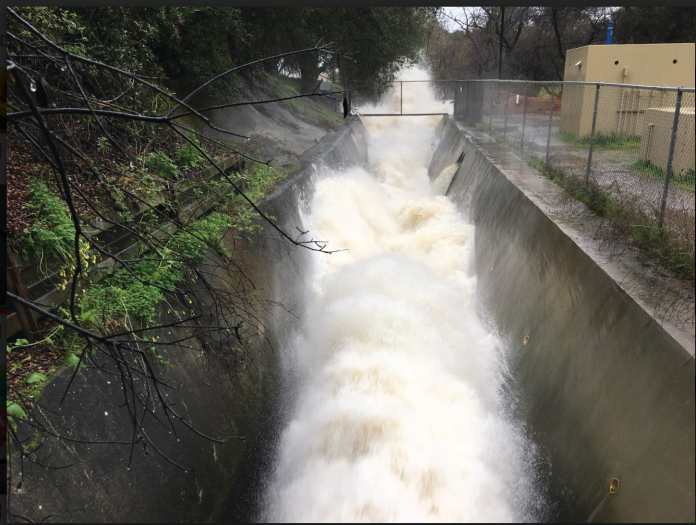Water and life down the drain
Watching all that rain go out to the ocean the past month is like watching our money and our future spilling down the drain. Where is the common sense to build some reservoirs, to save water in anticipation of the inevitable years of drought that are as much a part of the rhythm of California as earthquakes.
So, why then is no one bothering to prepare? The state hasn’t built a major dam in 35 years. Residents and farmers now must live with the pendulum swing of drought and flood, with no prospect of stability.
And now, in the thick of the floods, the spillway in the country’s largest dam on the Feather River in Oroville, threatened to burst, forcing the evacuation of 180,000 people. It’s not like the state’s officials didn’t know that was coming. The 770-foot-high dam was finished in 1968 and environmental groups have been calling for the state to shore up the precarious spillway since 2005.
Officials cite costs, lack of places to build new dams and environmental regulations as reasons they can’t expand the water supply. But we think that’s ridiculous. We can find the money and space when there is political will.
It’s hard to believe that we can come up with $25 billion for a wall that will not keep out drugs or people and $65 billion for a high speed rail that opponents say goes nowhere they want to go. Those projects have garnered political will: the first propelled by a fear of undocumented workers taking away jobs; the second a hope for more environmentally-friendly transportation.
But without water, there won’t be many places in California left to go.
With the same kind of will, the state could have enough reservoirs to stave off any drought and turn the driest areas into oases. Contra Costa County built the Los Vaqueros reservoir for $600 million and the Metropolitan Water District of Southern California spent $1.9 billion on the Diamond Lake Reservoir, both of which store enough water to keep their districts from rationing during droughts.
Maybe it’s our earthquake mentality. We know a big one is coming, but we don’t know where or when, so we just go on with our lives. We approach water with the same laissez-faire approach, like we can’t control the problem.
But we can. And we would if someone would make saving water as sexy as fearing immigrants or gliding on railways at 220 mph. That’s what great leaders do: help guide smart decisions.
Candidate Donald Trump promised major infrastructure improvements and we are hopeful that with a one-party federal government, maybe he can get some of those done, especially the projects that might not seem sexy, but are needed, such as fixing the Oroville Dam and repairing aging local dams.
Market drives wage hike
While the now-withdrawn nominee for U.S. Secretary of Labor, Andrew Puzder, and President Donald J. Trump argued that wages are too high, Gilroy’s Christopher Ranch Garlic has gone the other way: raising the minimum wage for workers to $15 an hour starting in 2018, ahead of the state’s 2022 mandate. The company has also raised current workers’ salaries to $13, while the state’s minimum is $10.50. Why? Because they were having trouble hiring workers at low wages to fill 800 full time and 300 seasonal positions.
Taking care of your workers is the best way we know to keep local jobs and make America productive again.












